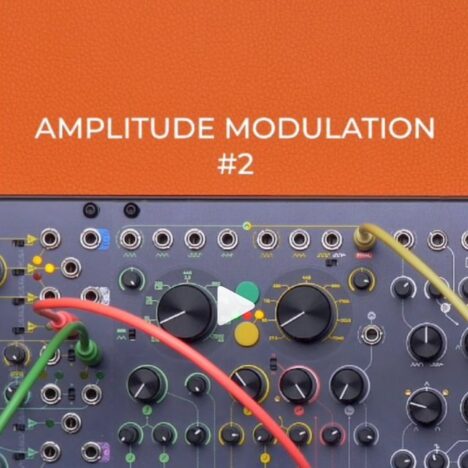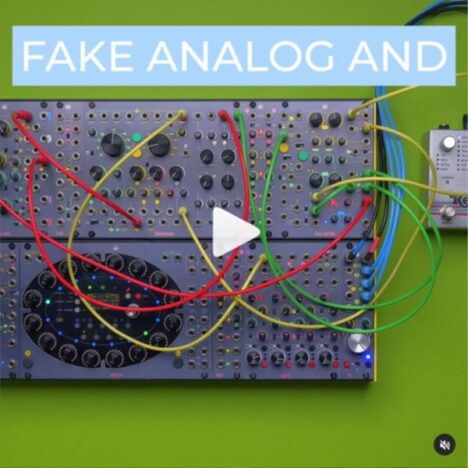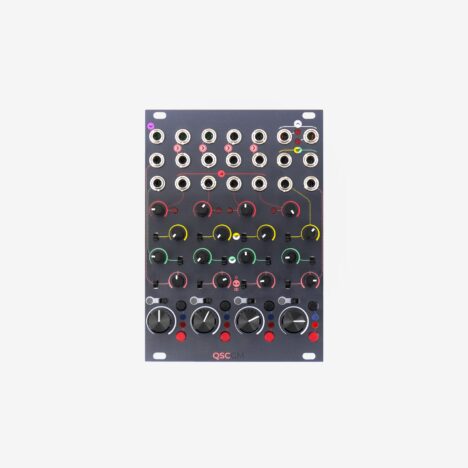- INSTRUMENTS
- EURORACK
- MODULES
- BAGÀI
- 411
- CUNSA – Sound Seasoning
- CGM – Creative Mixer Series
- BRENSO – Entangled Sound Sources
- USTA – The Voltage Score
- FALISTRI – Movement Manager
- SAPÈL – Tamed Random Source
- FUMANA – Dual 16 Bands Spectral Editor
- 321 – Scale + Flip + Shift + Combine
- 333 – ProAudio Sum & Distribution
- SILTA 2016 – discontinued
- SEI – trunk lines – discontinued
- CASES
- ACCESSORIES
- KNOBS
- RESOURCES
- MODULES
- 500 SERIES
- RESELLERS
- ABOUT
- ACCOUNT
Category / techniques
-
Amplitude Modulation #2
Another use of #BRENSO’s red section! Patch any CV to its input and use it as a sort of VCA (just like FALISTRI’s four-quadrant multiplier).
2021-11-16 -
Reverb Feedback #2
Ok, this is a little risky… Instead of using the group FX section, try to patch the FX return to another channel, and then play with this channel’s FX send. You’ll create a very dangerous feedback loop that can also provide some gentle overtones! If you have a QSC, you can even achieve this without a group by using its internal FX mono output.
2021-11-16 -
-
Safe Solo
By linking more channels, you can “safely” arrange a section to solo through the solo-in-place switches or buttons, then use the Safe Solo switch on the group modules to put that into practice. You can also think of it as a multi-mute tool!
2021-09-07 -
Pan/Crossfade #2
The first and last channels of the QSC feature a voltage-controllable panpot, just like the C channel. However, by combining this feature with the pan/crossfade switch, you can obtain a voltage-controlled crossfader! In this patch, we demonstrate both behaviors with the same CV, a bipolar LFO coming from FALISTRI’s green generator.
2021-09-07 -
Fake Analog And
By patching unipolar gates such as the two EOFs to FALISTRI’s four-quadrant multiplier, it outputs a gate-high signal only when both its inputs are high. It can be very useful in non-standard rhythmic patches!
2021-09-07 -
Pan/Crossfade #1
With the Quad Stereo Channel, we introduced the pan/crossfade function! If you patch two sound sources to the left and right inputs, you get them panned by default. But if you activate the crossfade switch, the panpot now blends the two sources into a mono output! (Yes, this makes the QSC a rudimentary eight-channel mono mixer…).
2021-09-07 -
Falistri Sync
Today we’ll create some complex waveforms with FALISTRI! Using both generators at audio rate, and patching one’s EOF to the other’s trig/gate input, we can obtain a sort of flip sync, where an oscillator forces the other to its rising stage.
2021-09-07 -
Quad Stereo Channel: The Development of a Eurorack Mixer
The idea of a stereo module for the CGM family has been with Frap Tools almost since the early development stage of the channel, group, and master modules. It wasn’t until October…2021-08-10 -
Formant Arpeggiator
Time for some advanced FALISTRI techniques: today we’ll create a sort of arpeggiator out of nowhere!
2021-08-05
Categories
Recent Posts
- CUNSA v/s FUMANA: The same patch on two different filters!
- Subharmonic formant arpeggios patch breakdown: a classic Falistri patch!
- Memes aside, let’s make Sandstorm by Darude on our Frap Tools system
- Four tips to use CUNSA as a sound source (including ringing and additive synthesis)
- ‘Glass sounds‘ analog through-zero FM patch breakdown with Brenso and Cunsa!








